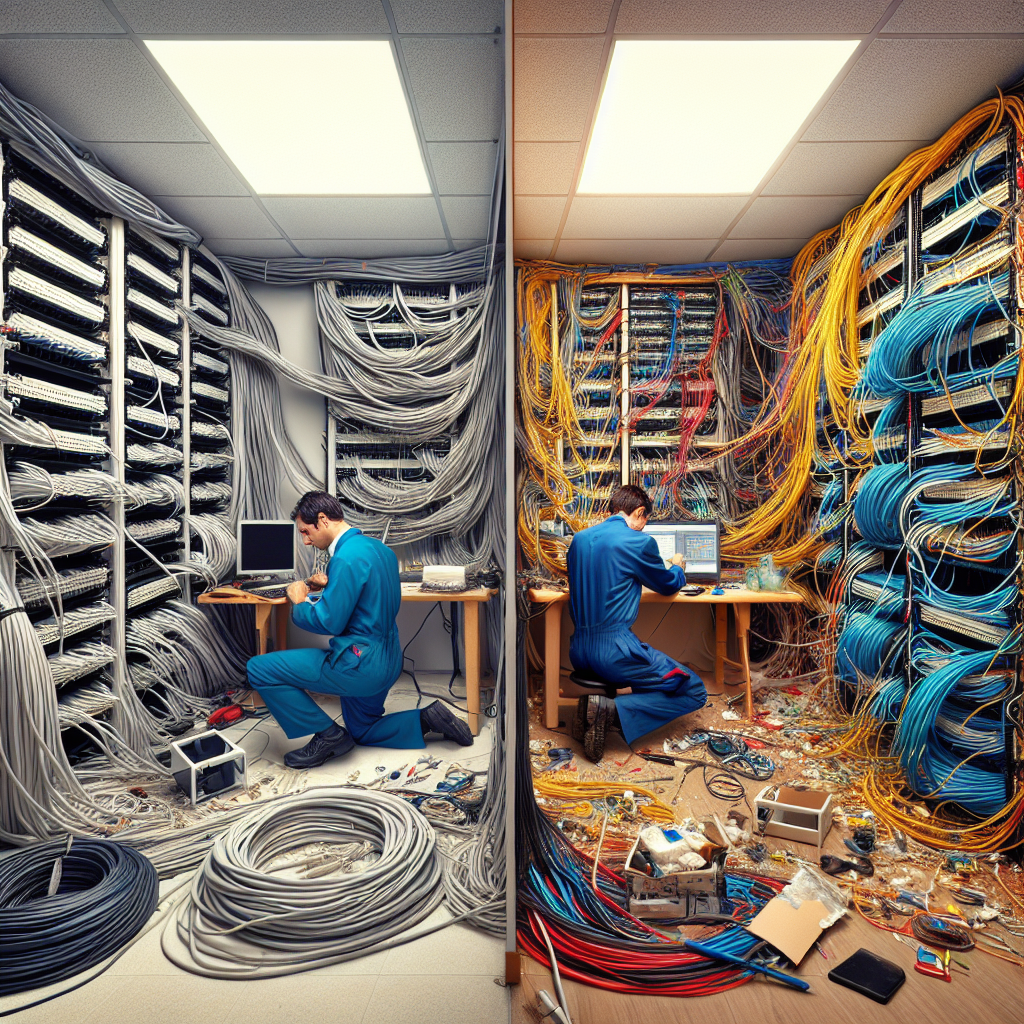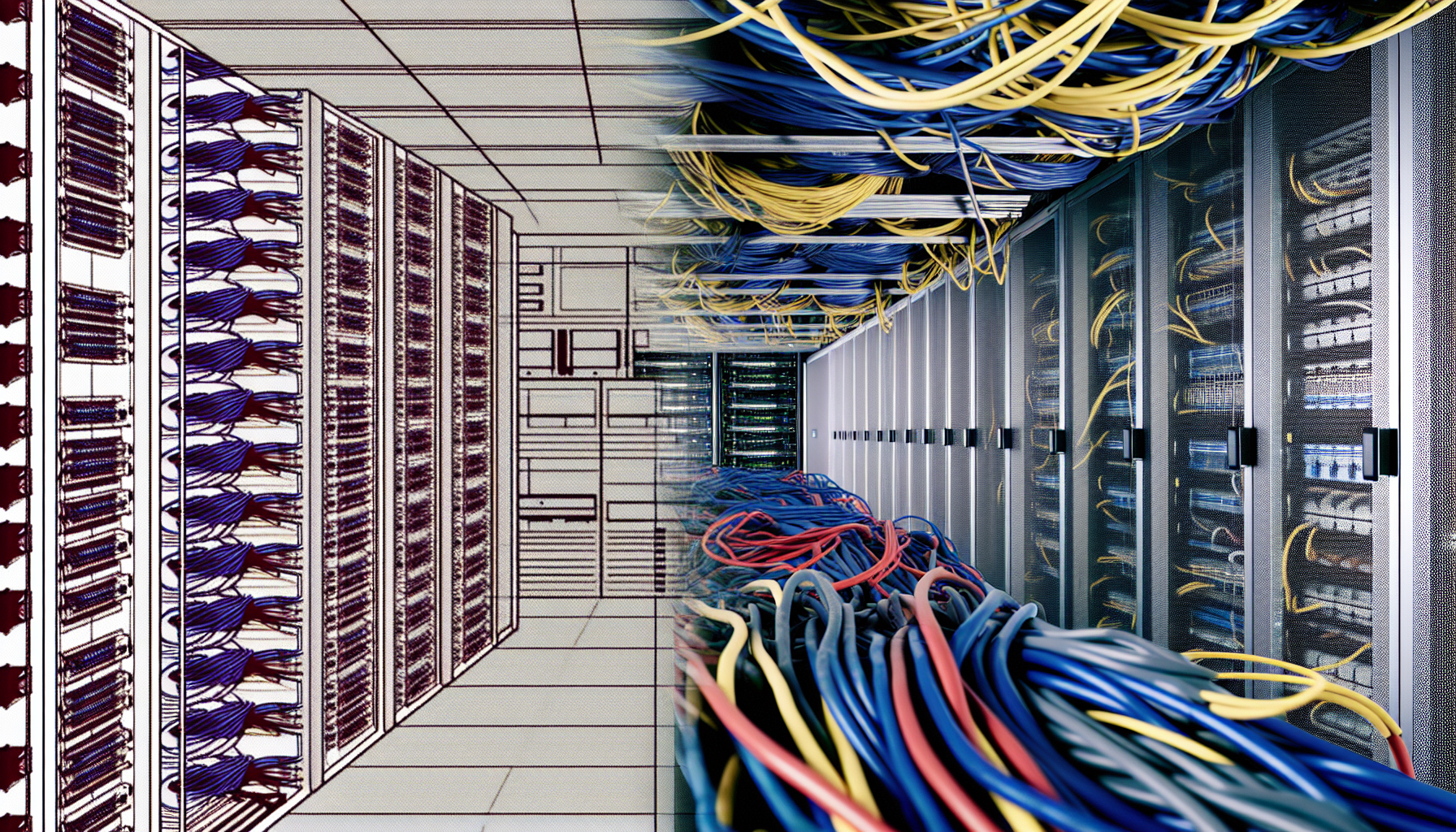In today’s hyper-connected business environment, the infrastructure supporting your digital operations isn’t just important—it’s critical. Yet many businesses overlook the foundation of their technology ecosystem: structured cabling. This hidden network of cables, connectors, and pathways is the nervous system of your organization, silently enabling every digital interaction your business depends on.
While most business leaders understand the basics, few truly grasp the game-changing secrets that separate adequate cabling installations from exceptional ones that deliver reliability, scalability, and significant return on investment. Today, we’re pulling back the curtain on the industry’s best-kept secrets.
Secret #1: Future-Proofing Saves You 73% on Long-Term Costs
The most expensive cabling system isn’t the one with the highest upfront cost—it’s the one you have to replace every few years. According to the Building Industry Consulting Service International (BICSI), organizations that invest in future-proofed cabling systems save an average of 73% on long-term infrastructure costs compared to those making decisions based solely on initial price points.
What constitutes a truly future-proof system? It’s about installing higher-category cabling than your current needs dictate. While CAT6A might exceed your present bandwidth requirements, this single decision can extend your infrastructure’s viability by 5-7 years, postponing costly renovations and downtime.
Beyond cable selection, future-proofing includes:
- Installing additional cabling pathways for expansion
- Maintaining meticulous documentation for future modifications
- Implementing standardized labeling systems
- Choosing modular components that facilitate upgrades
Each of these elements compounds your savings over time while maintaining peak performance as your business grows.

Secret #2: The Hidden Cost of Cable Management (Or Lack Thereof)
The difference between a professional cabling installation and an amateur one often comes down to cable management—the systematic organization of your cabling infrastructure. Poor cable management isn’t just an eyesore; it’s a financial liability.
Research from the Data Center Journal reveals that organizations with disorganized cabling spend 30-50% more time troubleshooting network issues and experience 5-7 times more downtime events annually than those with well-organized systems.
Professional cable management includes:
- Proper bundling techniques that prevent signal interference
- Appropriate bend radius maintenance to preserve cable integrity
- Strategic pathway routing that separates power and data cables
- Clear labeling systems that accelerate troubleshooting
- Adequate service loops that facilitate equipment relocation
These practices don’t just make your server room look impressive—they translate directly to operational efficiency, reduced downtime, and lower maintenance costs.
Secret #3: Certification Testing Is Your Insurance Policy
Here’s a shocking revelation: Many cabling installers skip comprehensive certification testing, providing only basic connectivity verification. This oversight can lead to intermittent network issues that are virtually impossible to diagnose without specialized equipment.
According to TIA (Telecommunications Industry Association), proper certification testing should verify:
- Wire mapping and continuity
- Length measurements for all cable runs
- Insertion loss across multiple frequencies
- Near-end crosstalk performance
- Return loss measurements
- Propagation delay and delay skew
Without these comprehensive tests, you’re essentially accepting an unchecked system on faith. Always demand full certification documentation with test results for every installed cable. This documentation serves as your warranty against future performance issues and provides a baseline for troubleshooting if problems arise.

Secret #4: Wireless Excellence Depends on Wired Infrastructure
In a twist of technological irony, the performance of your wireless network is directly dependent on the quality of your wired infrastructure. As Cisco Systems notes in their network design guides, even the most advanced Wi-Fi solutions require robust, high-performance wired backbones to deliver their advertised capabilities.
Each wireless access point requires:
- Category 6A cabling (minimum) for future-proof performance
- Strategically planned cable pathways for optimal AP placement
- Power over Ethernet (PoE) compatibility for simplified deployment
- Redundant connections for mission-critical coverage areas
The proliferation of IoT devices, high-definition video streaming, and cloud applications has dramatically increased bandwidth demands on wireless networks. Without a properly designed and installed structured cabling system supporting your wireless infrastructure, you’ll experience the frustration of investing in premium wireless equipment that can’t deliver premium performance.
Secret #5: The Environmental Impact on Cable Performance
Temperature, humidity, and electromagnetic interference (EMI) can significantly degrade cable performance—yet these factors are frequently overlooked during installation planning. Cables installed near HVAC equipment, power lines, or in poorly ventilated spaces often fail prematurely or deliver sub-optimal performance.
According to ANSI/TIA-569-E standards, optimal environmental conditions for telecommunications spaces include:
- Temperature range: 64°F to 75°F (18°C to 24°C)
- Relative humidity: 30% to 55%
- Maximum rate of change: 5.4°F (3°C) per hour
- Minimum clearance from power sources based on voltage
Exceeding these parameters can reduce cable lifespan by 40-60% and introduce intermittent performance issues that are difficult to diagnose. When designing your cabling infrastructure, environmental considerations should be a top priority, not an afterthought.

Secret #6: Documentation Is Worth Its Weight in Gold
The most valuable component of a structured cabling system isn’t the premium cable or the high-end connectivity hardware—it’s the documentation. Comprehensive documentation saves organizations an average of 75% in troubleshooting time and significantly reduces mean time to repair (MTTR) when issues arise.
Essential documentation includes:
- Detailed cable routing diagrams
- Patch panel port assignments
- Network closet/room layouts
- Equipment rack elevations
- Cable testing and certification results
- Manufacturer warranties and specifications
- As-built drawings showing actual installation paths
Yet surprisingly, a survey by the Communications Cable and Connectivity Association (CCCA) found that fewer than 30% of businesses maintain complete and accurate documentation of their cabling infrastructure. This oversight turns routine maintenance into complex detective work and minor reconfigurations into major projects.
Secret #7: Structured Cabling Is a Business Investment, Not an IT Expense
The most transformative secret about structured cabling is recognizing it as a strategic business asset rather than an IT expense. High-performance cabling infrastructure directly impacts:
- Employee productivity through reliable connectivity
- Customer experience via responsive applications
- Operational efficiency through reduced downtime
- Business agility by enabling rapid reconfigurations
- Competitive advantage through technology readiness
A study by the American Society for Quality (ASQ) found that organizations viewing infrastructure investments as strategic assets rather than necessary expenses report 32% higher satisfaction with technology implementations and 27% better ROI on their technology investments overall.
When evaluating structured cabling proposals, the lowest bid rarely delivers the greatest value. Consider total cost of ownership, scalability, warranty coverage, installer certifications, and business impact when making your selection.
Comparing Structured Cabling Solutions: Professional vs. DIY Approaches
| Feature | Professional Installation | DIY Installation | Mynians Structured Cabling |
|---|---|---|---|
| Initial Cost | Higher upfront investment | Lower immediate expense | Competitive with maximum value |
| Long-term Reliability | 15+ years expected lifespan | 3-5 years before issues | 20+ year system warranty |
| Scalability | Designed for expansion | Limited growth capacity | Future-proofed with expansion capacity built-in |
| Documentation | Comprehensive as-builts | Minimal to none | Complete digital and physical documentation |
| Certification | Full testing to industry standards | Basic connectivity testing | 100% tested with certification reports |
| Business Impact | Minimal downtime, high reliability | Frequent disruptions | 99.99% uptime with redundant pathways |

Mynians Structured Cabling Success Stories
Florida Medical Center Eliminates Network Outages
When Central Florida Medical Center experienced recurring network outages affecting patient care, they turned to Mynians for a solution. Our team discovered improperly installed cabling with numerous violations of industry standards.
“After Mynians redesigned and reinstalled our structured cabling system, we’ve had zero network-related outages for over 18 months. The investment has paid for itself multiple times over in avoided downtime alone,” reports Sarah Johnson, IT Director.
Their new system includes redundant pathways for critical systems, comprehensive testing documentation, and environmental monitoring to ensure optimal performance in their sensitive healthcare environment.
Orlando Tech Startup Scales Without Infrastructure Limitations
Growing tech startup Innovate Orlando was facing a common challenge: their rapid growth was constrained by an inadequate cabling infrastructure installed when they first opened their offices.
“Every time we hired new team members, we faced weeks of delays getting their workstations connected properly,” explains Michael Rodriguez, Operations Manager. “Mynians designed a scalable system that not only solved our immediate needs but has supported our growth from 25 to 75 employees without any additional infrastructure work. The 5-star service and attention to detail was exactly what we needed.”
Manufacturing Facility Improves Production Efficiency
Heritage Manufacturing experienced frequent production delays due to unreliable connections between their automated systems. These outages were costing thousands in lost production time.
“Mynians didn’t just fix our cabling problems—they transformed how our entire facility operates,” says Production Manager Robert Williams. “Their team identified issues no one else had noticed, including environmental factors affecting our cable performance. Since the new structured cabling system was installed, our production efficiency has increased by 27%.”
FAQ: Structured Cabling Essentials
How long should a properly installed structured cabling system last?
A professionally designed and installed structured cabling system should provide reliable service for 15-20 years. Many manufacturers offer 25-year warranties when installed by certified professionals, making it one of the longest-lasting technology investments your business can make.
What’s the difference between structured cabling and standard network cabling?
Standard network cabling typically refers to ad hoc, point-to-point connections installed as needed. Structured cabling follows TIA/EIA standards with a hierarchical design, including entrance facilities, equipment rooms, telecommunications rooms, backbone cabling, horizontal cabling, and work areas. This comprehensive approach provides greater reliability, scalability, and easier management.
How does structured cabling impact network speed?
Properly installed structured cabling eliminates many common causes of network slowdowns, including signal interference, excessive cable lengths, improper terminations, and inadequate bandwidth capacity. Organizations typically see 20-40% improvement in network performance following a professional structured cabling installation.
Is structured cabling necessary for small businesses?
Yes—in fact, small businesses often benefit most from structured cabling because they typically lack dedicated IT staff to troubleshoot connectivity issues. The reliability and reduced maintenance of a professional installation are particularly valuable for small businesses where technology downtime directly impacts revenue.
How disruptive is installing a new structured cabling system?
With proper planning, most structured cabling installations can be completed with minimal business disruption. Many installations can be performed after hours or in phases to ensure continuous operations. Mynians specializes in zero-downtime implementation strategies for businesses that cannot afford any interruption to their operations.
Transform Your Business Infrastructure with Mynians Structured Cabling
Your network infrastructure shouldn’t be an afterthought—it’s the foundation that enables every aspect of your digital business. At Mynians, we deliver structured cabling solutions designed for performance, scalability, and reliability that directly impact your bottom line.
Our structured cabling services include:
- Comprehensive site assessment and needs analysis
- Custom design with future growth capacity built-in
- Professional installation by certified technicians
- Complete testing and certification documentation
- 25-year manufacturer’s warranty on all installations
- 24/7 support and rapid response for any issues
Don’t let substandard cabling limit your business potential. Contact Mynians today at (407) 374-2782 or visit https://mynians.com/ to schedule a free infrastructure assessment and discover how our structured cabling solutions can deliver measurable business advantages through superior design, implementation, and support.
Our team will identify specific opportunities to improve your network performance, enhance reliability, and reduce long-term technology costs—all backed by our satisfaction guarantee and industry-leading warranties.


